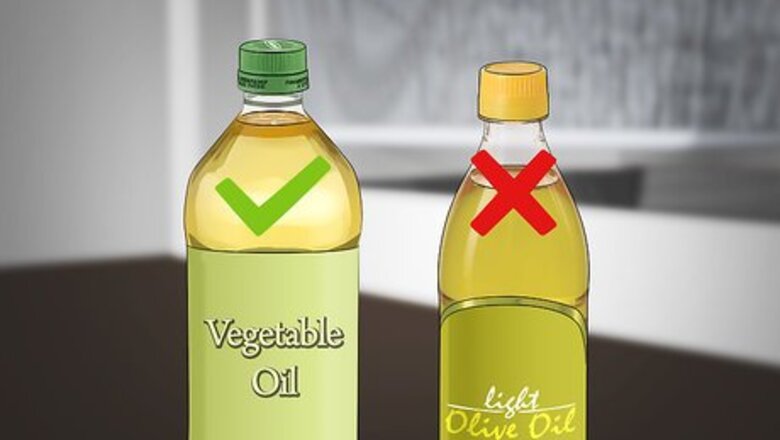
views
Setting up Your Deep Fryer
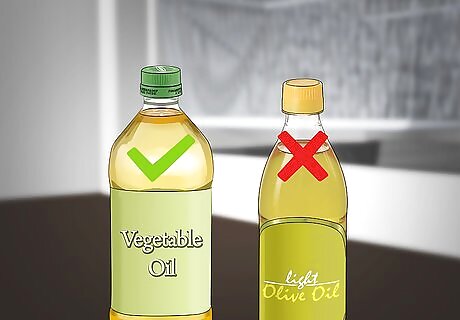
Use an oil with a high smoke point. The smoke point is the temperature in which the oil starts to burn or break down and can make your food taste burnt. Vegetable, grapeseed, peanut, and soybean oil all have a high smoke point. Other oils, like olive oil, have a low smoke point and aren’t ideal to use in a deep fryer.

Read the instructions that came with your deep fryer. There are a variety of different kinds of deep fryers on the market and they all operate differently. Make sure to read the instructions that came with the fryer so that you’re aware of any specific things that you have to do with your model.
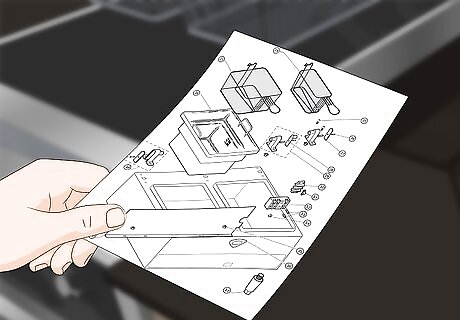
Assemble your deep fryer. Some deep fryers will have a frying basket that you need to put together or a lid that you have to attach to the top of the fryer. Read the instructions that came with the deep fryer and assemble the fryer so that it’s ready for use.
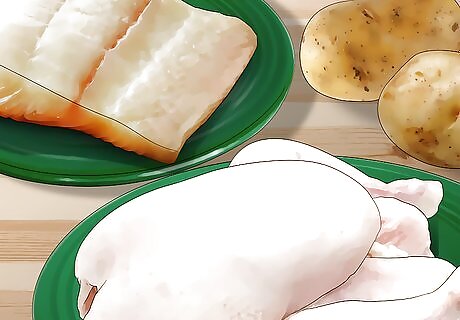
Purchase a food that's good for deep frying. A variety of foods can be deep fried but some are more popular than others. Some of the most common things to deep fry include chicken, potatoes, and fish. Most food will taste better if you dredge it through an egg wash and apply a flour or breadcrumb coating on the food before frying. You can also fry vegetables like okra, tomatoes, and pickles.
Deep Frying Food
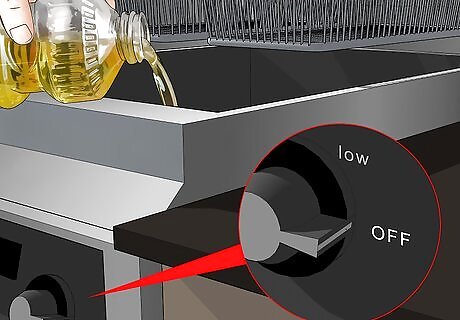
Pour the oil into the deep fryer when the fryer is off and cool. Making sure that the fryer is off and cool will prevent hot oil from splashing on you. Find the minimum and maximum fill line in your deep fryer and make sure not to overfill or underfill it. If your fryer doesn’t have these lines, do not fill it more than halfway. If your fryer has a basket, remove it and set it aside before filling the fryer’s basin with oil.
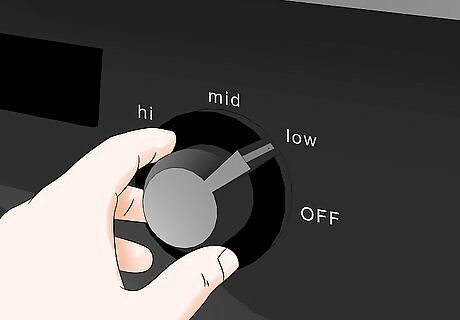
Turn on the fryer. Some deep fryers will have a switch while others will require you to plug them in. Read the instructions that came with your fryer to learn how to turn it on. If your deep fryer has a lid, close it while the oil preheats.
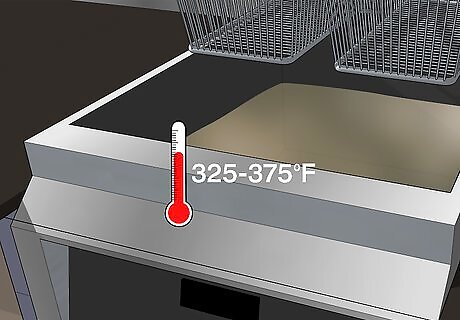
Heat the oil to 325-375°F (163-191°C). The temperature to which you heat your oil will vary but is usually between 325-375°F (163-191°C). If you have a built-in thermostat, turn the dial to the correct temperature. If your fryer doesn’t have one, you can use a cooking thermometer to test the temperature. If you see or smell smoke coming from the deep fryer, it means that you’ve heated up your oil too much. Turn down the heat on the fryer or your food may taste burnt. Some fryers will have a light that will turn on when your oil is at the right temperature.
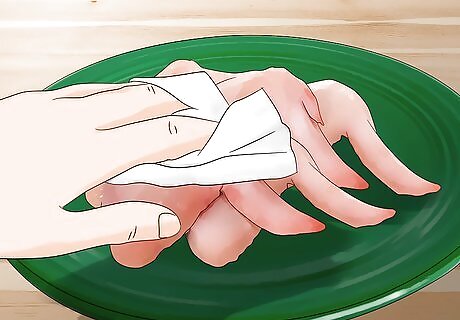
Pat your food dry. Wet or moist food will cause the oil to bubble and spit, potentially burning you. To prevent hot oil from splashing on you, make sure to pat your food down with dry paper towels to remove the water.
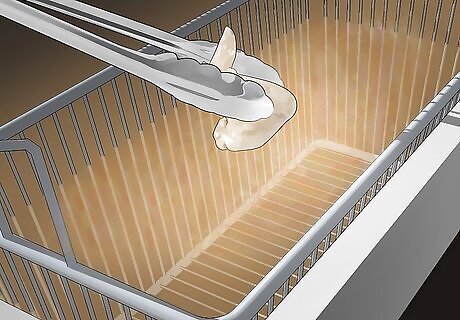
Dip your food into the fryer slowly. Fill the basket with your food and carefully submerge the food into the fryer. If your fryer doesn’t have a basket, use tongs or a slotted spoon. Do not drop the food into the fryer or it will cause the hot oil to splash and potentially burn you. Fry small quantities of food to prevent foaming. Some fryers will have a lid that you should apply to the top of the fryer as your food is cooking. This will prevent oil splash back and frying odors. Don’t submerge plastic utensils in the fryer or they may melt.
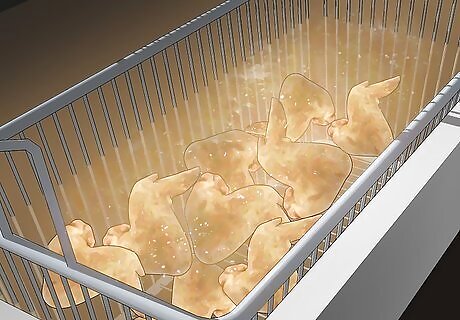
Fry your food until it has a golden brown exterior. Different foods will require different frying times, so make sure to reference your recipe before you start frying. Monitor your food to make sure that it doesn’t burn. Lift the basket out of the oil or use tongs to check on how the food looks. Most foods will finish frying in around 15 minutes. If you have a lot of food, fry it in separate batches. Do not overcrowd the fryer or your food may come out undercooked or the oil may overflow.
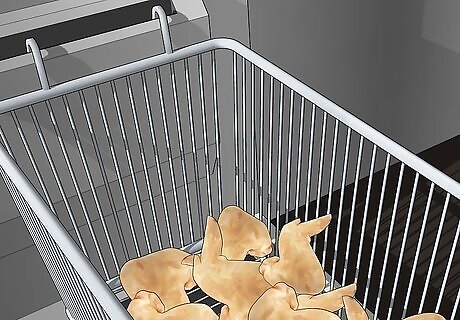
Remove the food from the oil and place it on a drying rack. Remove the basket from the fryer or take the food out of the oil with a slotted spoon or tongs. Lightly shake off any excess oil over the fryer and place it on a drying rack or a plate lined with paper towels. Wait for the food to cool down before eating it.
Staying Safe
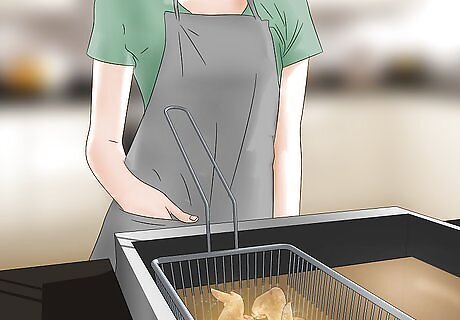
Monitor the fryer while it’s on. Never walk away or leave the fryer unattended. If the oil starts to smoke or burn, lower the heat or turn off the fryer completely.
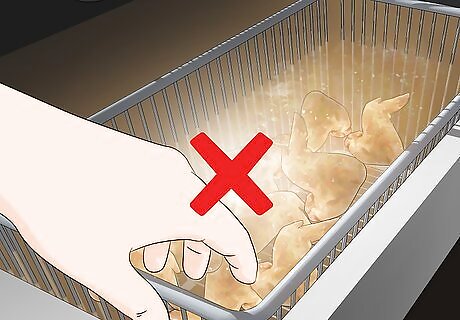
Don’t touch the fryer while it’s on. Some deep fryers will get hot and can burn you if you touch them. While the fryer is on, make sure that you are handling the basket or tongs that you’re using to submerge food, not the fryer itself.

Keep cords out of the way so that you don’t trip on them. If your deep fryer came with an electrical cord, make sure that it’s in an area that’s free of foot traffic. If someone trips over the cord, it can cause the entire deep fryer to topple over and could seriously burn someone or start a grease fire.
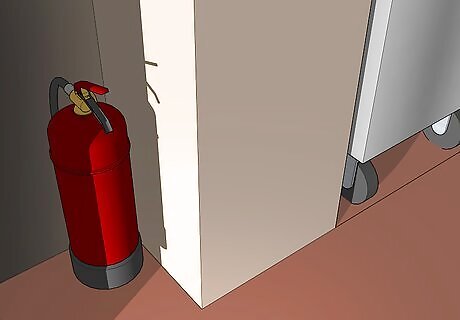
Keep a fire extinguisher close in case of a grease fire. Grease fires can be incredibly dangerous and can’t be put out with water. For that reason, it’s important that you keep a fire extinguisher nearby. Point the extinguisher towards the oil fire and press the trigger to expel the chemicals from the extinguisher onto the fire. If you can’t put out the grease fire, call 9-1-1 immediately.
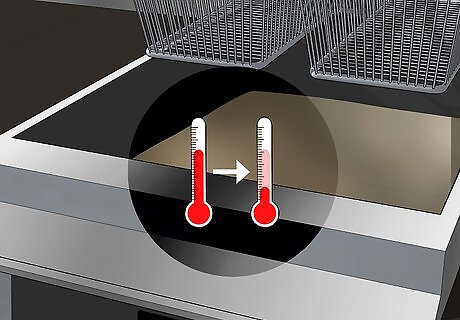
Wait for the oil to cool to room temperature before disposing of it. When you’re done deep frying, unplug or turn off the fryer and let the oil cool down to room temperature. This typically takes around two hours. Pour the cooled oil into a sealable metal or plastic container and dispose of it in the trash or at a grease collecting facility. Do not pour the oil down the drain or toilet because it can create clogs in your pipes.
















Comments
0 comment